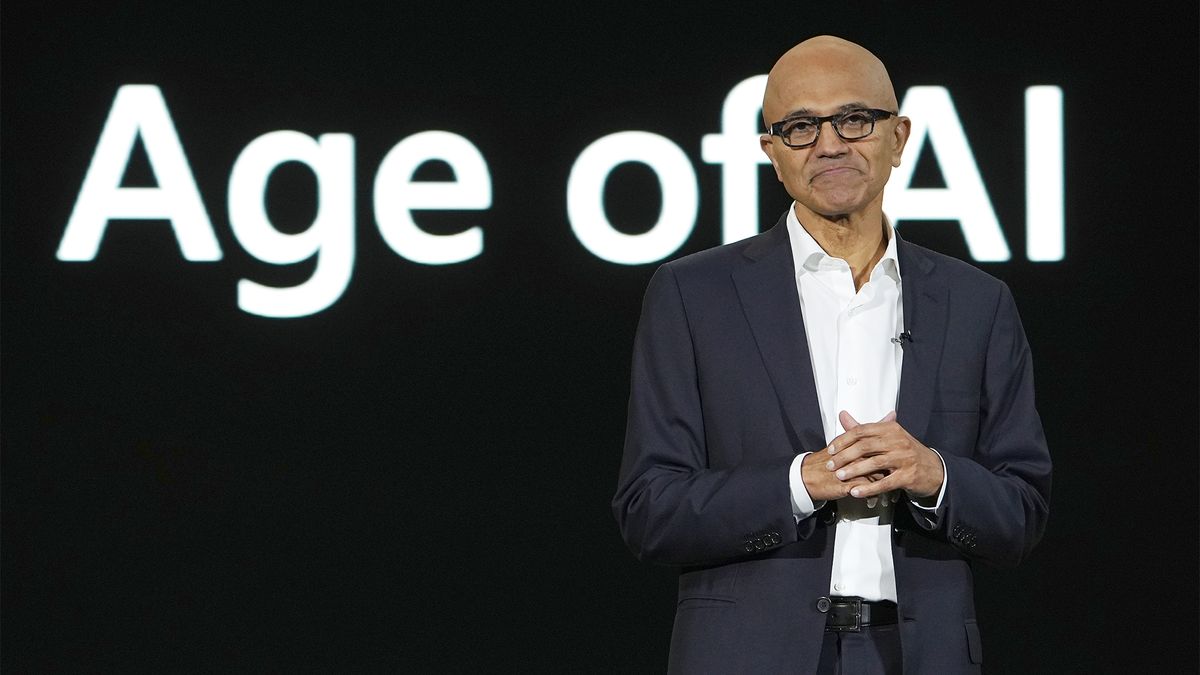Microsoft is reorganizing its results to better highlight AI gains in its business as investors keep a close watch on the costs of rolling out the technology.
Last month, Microsoft posted its full year results, with revenue up 16% to more than $245 billion — but capital spending, largely on AI and cloud, also climbed by a whopping 77% to $19 billion in the fourth quarter alone.
Many were watching to see the impact of AI spending on its bottom line, in particular whether the technology was as yet contributing much to revenue.
Microsoft broke that down in detail in an earnings conference call, specifying that eight points of Azure’s 29% growth was from AI services, for example.
Now, Microsoft is looking to clarify its results to highlight how AI is contributing to its various lines of business.
Microsoft reporting changes look to calm confusion
The key change, according to Microsoft in a slide deck posted to its investor relations site, is that revenue from commercial components of Microsoft 365 – notably Enterprise Mobility and security (previously in Azure) and Windows commercial products – will be included in the Productivity and Business Processes (PBP) segment.
Beyond lumping the segments together based on how they are managed, it means the Microsoft 356 aspects will now be reported in SEC filings, too.
Additionally, Copilot Pro is being removed from Office Consumer to Search and news advertising, while the AI and speech recognition unit Nuance is shifting out of Server to the PBP segment. Windows revenue and devices revenue will be lumped together in SEC filings to highlight PC market-driven areas of the business. Meanwhile, some search revenue will shift to Azure.
Such detail may sound like something for accountants to ponder, and Microsoft itself said the purpose was to align reporting to reflect how the business is managed. But the move follows criticism that Microsoft wasn’t being clear enough about its AI revenue — despite it being one of a few companies to actually break out the figure, according to Reuters.
Microsoft restated aspects of its last round of full year results under the new system, showing Microsoft 365 Commercial cloud revenue growth was up 18%, Azure and other cloud services revenue growth were up 33% rather than the 30% previously reported.
Similarly, search and advertising revenue were up 9% versus 12% previously while Windows OEM and Devices revenue growth was flat.
Investor worries
After the last round of results, analysts criticized Microsoft for not being clear enough with how the billions it was spending on AI would eventually pay off. At the time, Forrester principal analyst Lee Sustar told ITPro that the numbers were positive but lacked clarity — specifically around AI.
“Investors and customers wondering whether Microsoft’s AI offerings are still hauling in revenue got some assurance amid lingering questions following the company’s quarterly earnings,” Sustar said.
“The company’s 20% growth in its Intelligent Cloud earnings resulted in quarterly revenue of $28.5 billion. However, that segment includes both the Azure cloud as well as other properties, so there are no specific numbers to back Microsoft’s claim that ‘Azure and other cloud services’ grew 29 percent.”
“Given Microsoft’s record in recent years, Wall Street hasn’t much cared that precise Azure numbers aren’t disclosed,” Sustar continued.
“However, the company noted that operating expenses for Intelligent Cloud grew 5% compared to the same period a year earlier due to the scale-out of AI infrastructure in Azure. Investors and Azure customers will be keeping an eye on that trend as an indicator of AI market success for Microsoft and the cloud providers generally.”
The new format of reporting looks to address such complaints, at least in part.
More widely, investors are looking to companies for proof that AI is capable of benefiting bottom lines, rather than just expanding costs. The day after the company posted its most recent results, Microsoft’s share price fell about 7 per cent, with Barron’s pinning the blame on Microsoft saying AI investment would take a long time to pay off.
